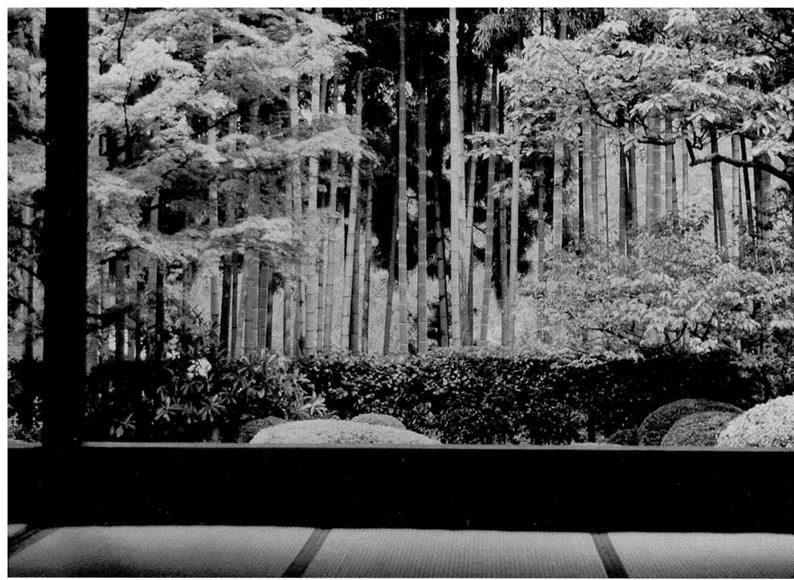The shinden-zukuri main hall was composed of the building core, or moya, surrounded by outer aisles, or hisashi. The spans between the pillars of the hisashi were fitted with shitomido shutters, which in their open position left the exterior facade of the hisashi totally open, creating a panoramic interior/exterior architectural space. The hisashi were used as an extension of the moya-, an ochi-en, which skirted the hisashi one step lower in floor height, served as a corridor and was lined with a balustrade on its far edge (Figure 36.1).
With the division of the interior space along the north – south axis into hare and ke came the further division of the north side of the building into a row of three small rooms which integrated the hisashi space and resulted in the breakdown of the moya/hisashi structure. This development did not, however, lead to internal corridors, so the basic path of movement still revolved around the periphery of the building. The area between interior and exterior, however, changed from hisashi to hiro-en (covered
 veranda) and ochi-en (lower veranda corridor).
veranda) and ochi-en (lower veranda corridor).
The most significant aspect of these changes is that where shitomido were installed between the outer row of hisashi pillars in shinden-zukuri, and so formed a linear demarcation between interior and exterior, mairado were installed on the inner row of pillars between the room and hiro-en, creating a quasi-interior/exterior space. As noted before, mairado—composed of two wooden doors and one akarishoji paper screen that slide in a three-track gutter—always leave a half-bay section of wall closed off to the outside, and this cropped view gave rise to the basic characteristics of the north garden. With these architectural developments, the threshold between interior and exterior space became a smaller opening set further back into the building’s interior (Figure 36.2).
Early shoin-zukuri usually had hiro-en not on all four sides of the building, but only on one or two sides; which were closed off on the ends by wooden doors, and there was no balustrade on the far side of the ochi-en. While
hisashi were an extension of the moya and formed a single interior space, the hiro-en was cut off by mairado and had more of an exterior spatial character. Just as the Zen temple south garden was unrelated to the adjacent room, the hiro-en and mairado structure distanced the room from the garden. Although it is necessary to pass through the hiro-en in order to enter the mairado-enclosed room, the ochi-en skirting the building’s four sides corresponds more closely to a corridor.
With the development of single-track amado exterior sliding doors in the mid-seventeenth century, the threshold between interior and exterior space moved once again—this time to the outer row of pillars between the hiro-en and ochi-en, as in shinden-zukuri. This also meant that the hiro-en, which had previously been delineated from the interior and functioned as something close to exterior space, would again begin to serve as an extension of the interior space. This space, now called the irikawa, had tatami-mat flooring, further emphasizing its interior
character (Figure 36.3). In their open position, single-track amado sliding doors allow for a totally open and unified interior/exterior relationship, which is again reminiscent of shinden-zukuri.
The view of the garden from the room—arrayed before the viewer like a stage set—is breathtaking. With the appearance of single-track amado door fixtures, gardens became increasingly multifaceted, kinetic, and dynamic (Figure 37).
In this way, as door fixtures changed first from shitomi – do to mairado, and then to single-track amado, resulting changes in the form and location of the threshold between the interior and exterior influenced the relationship between room interior and garden. The room/garden relationship of these purely ornamental, contemplative gardens—which viewers never actually entered—was based on a delicate balance between what was to be shown, and how, and what would be perceived from the principal viewing seat in each of the different architectural styles. The threshold’s role in the interior/exterior relationship thus acts as the primary influence on the character of these extremely visual, painting-like Japanese gardens designed to be “viewed from a seated position in the room interior.”



